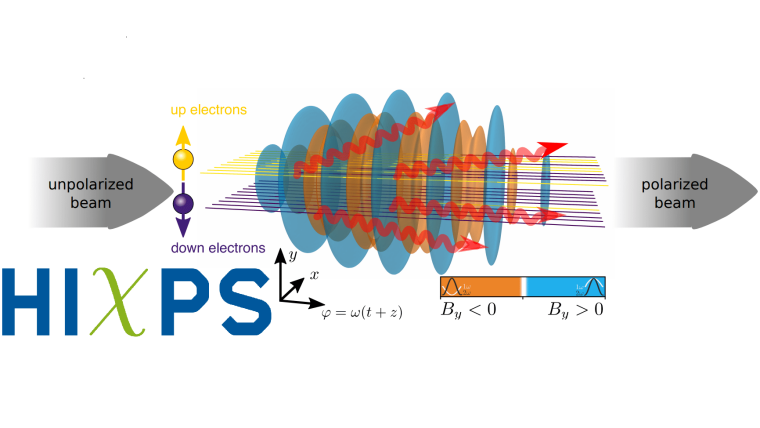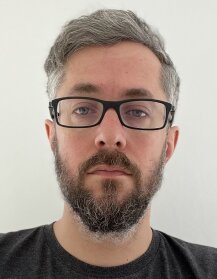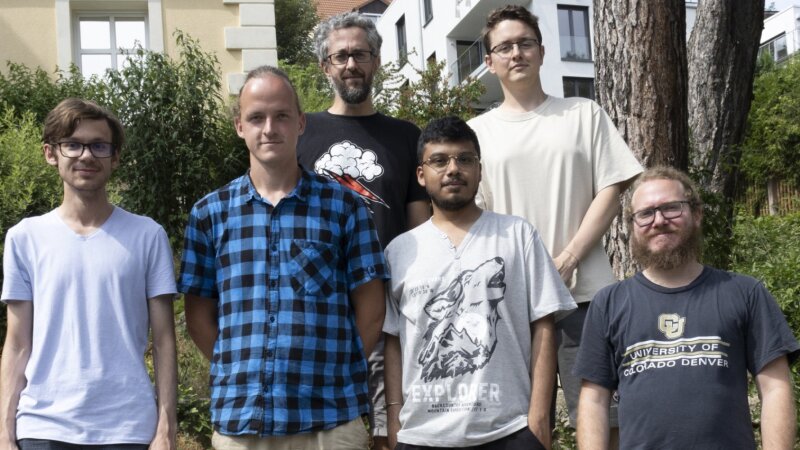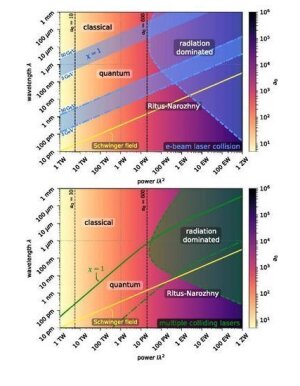
The different regimes of strong-field QED plasma interactions can be reached with various laser power and wavelength.
Image: Daniel SeiptThe aim of our research group, HI-Jena Computational High Intensity Plasma Science (HIχPS), is to advance the theoretical understanding of relativistic laser plasmas under extreme conditions. In our research we are especially interested in quantum processes, such as hard-photon emission, electron-positron pair production, and QED cascades. These phenomena occur in ultra-relativistic laser pulses and can affect the collecitve plasma dynamics at extreme light intensities, where one enters the new field of radiation dominated and QED-plasma physics. We are also actively investigating laser-plasma based particle acceleration, X- and gamma-ray generation, and attosecond physics phenomena. By using state-of-the art theoretical modelling, numerical methods, modern programming techniques and hardware architectures we are able to make precise predictions for this exciting new regime of light-matter-interaction.
Publications:
- P. Zhang, S. S. Bulanov, D. Seipt, A. V. Arefiev, A. G. R. Thomas: Relativistic Plasma Physics in Supercritical FieldExternal link. Physics of Plasmas 27, 050601 (2020)
- Daniel Seipt, Dario Del Sorbo, Christopher P. Ridgers, Alec G. R. Thomas: Ultrafast Polarization of an Electron Beam in an Intense Bi-chromatic Laser FieldExternal link. Phys. Rev. A 100, 061402(R)
- Daniel Seipt, Vasily Yu. Kharin, Sergey G. Rykovanov: Optimizing Laser Pulses for Narrowband Inverse Compton Sources in the High-Intensity RegimeExternal link. Phys. Rev. Lett. 122, 204802 (2019)
A. Ilderton, B. King, D. Seipt: An extended locally constant field approximation for nonlinear Compton scattering.External link Phys. Rev. A 99, 042121 (2019) - D. Seipt, D. Del Sorbo, C. P. Ridgers, A. G. R. Thomas. Theory of Radiative Electron Polarization in Strong Laser FieldsExternal link. Phys. Rev. A 98, 023417 (2018)
- D. Seipt, R. A. Müller, A. Surzhykov, S. Fritzsche. Two-color above threshold ionization of atoms and ions in XUV Bessel beams and combined with intense laser lightExternal link. Phys. Rev. A 94, 053420 (2016)
- D. Seipt, T. Heinzl, M. Marklund, S. S. Bulanov. Depletion of intense fieldsExternal link. Phys. Rev. Lett. 118, 154803 (2017)
- Vasily Yu. Kharin, Daniel Seipt, and Sergey G. Rykovanov. Higher-Dimensional Caustics in Nonlinear Compton ScatteringExternal link. Phys. Rev. Lett. 120, 044802 (2018).
- D. Seipt, A. Surzhykov, S. Fritzsche, B. Kämpfer. Caustic structures in the spectrum of x-ray Compton scattering off electrons driven by a short intense laser pulseExternal link. New Journal of Physics 18, 023044 (2016).


